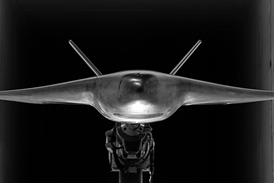By John Croft in New Jersey & David Learmount in London
|
European milestones The US Federal Aviation Administration and Eurocontrol are co-operating closely on the controller-pilot datalink communications programme. Meanwhile the Eurocontrol equivalent, known as Link 2000+, has already passed a number of milestones: About 150 aircraft are already VDL-2 equipped and 200 more will be by the end of the year, according to Link 2000+'s operations work package leader Soren Dissing. This was achieved under an incentive programme set up because Eurocontrol estimates CPDLC will increase system capacity by more than 11% once equipage has progressed beyond 75% of the fleet. Under the present proposed deadlines for Link 2000+, all new-build aircraft must be fitted with VDL-2 by the end of 2009 and retrofit must take place within five years. Eurocontrol's Upper Area Control Centre at Maastricht is already equipped for operational CPDLC, the Karlsruhe ACC in Germany is preparing for it, and Paris ACC expects to begin trials about the end of the year. |
|---|
Click here for the FAA 2003 recommendations report
Beyond 2017, the FAA proposes, aircraft without VDL-2 will be excluded from high traffic controlled airspace. The timetable has been proposed by the FAA's future communications architecture team at the agency's William J Hughes Technical Center at Atlantic City International airport in New Jersey.
The proposed deadline, revealed to Flight International during a briefing at the technical centre last week, is three years ahead of the FAA's recently announced 2020 mandate for aircraft to carry automatic dependent surveillance - broadcast (ADS-B) equipment in order to fly in certain airspace.
Although the FAA has not yet set a date for releasing a notice of proposed rulemaking for VDL-2, it has said the ADS-B NPRM will be out by September with a proposed deadline to finalise the ADS-B rule by 2010. The FAA is watching European experience with CPDLC, because Eurocontrol's VDL-2 programme is already in its early operational stages with the system (see box).
FAA communications engineers plan a three-phase roll-out of the new ground and flight communications architecture. In segment one, from 2011 until 2017, existing airborne avionics capabilities will be expanded to include CPDLC for a variety of services including 4D trajectory management, en-route clearances and traffic flow rerouting.
Segment two, from 2017 to 2022, will begin using a wider variety of the datalink services for flight-critical information as a normal operating mode. Segment three will include delegated separation operations and will see voice communications being available only as a back-up.
Segment one is based largely on the CPDLC tests carried out with American Airlines in Miami airspace between 2002 and 2004. The FAA terminated the programme in 2004 for budget reasons.
Meanwhile, FAA analysis shows that existing 25kHz channel spacing between VHF radio channels will be adequate until 2022, although additional spectrum will be needed. It observes that the 31.5kbps VDL-2 link capacity too may become limiting, requiring portions of the data to be transmitted to and from aircraft via ADS-B.
Eurocontrol's Link 2000+ programmeSource: Flight International


























